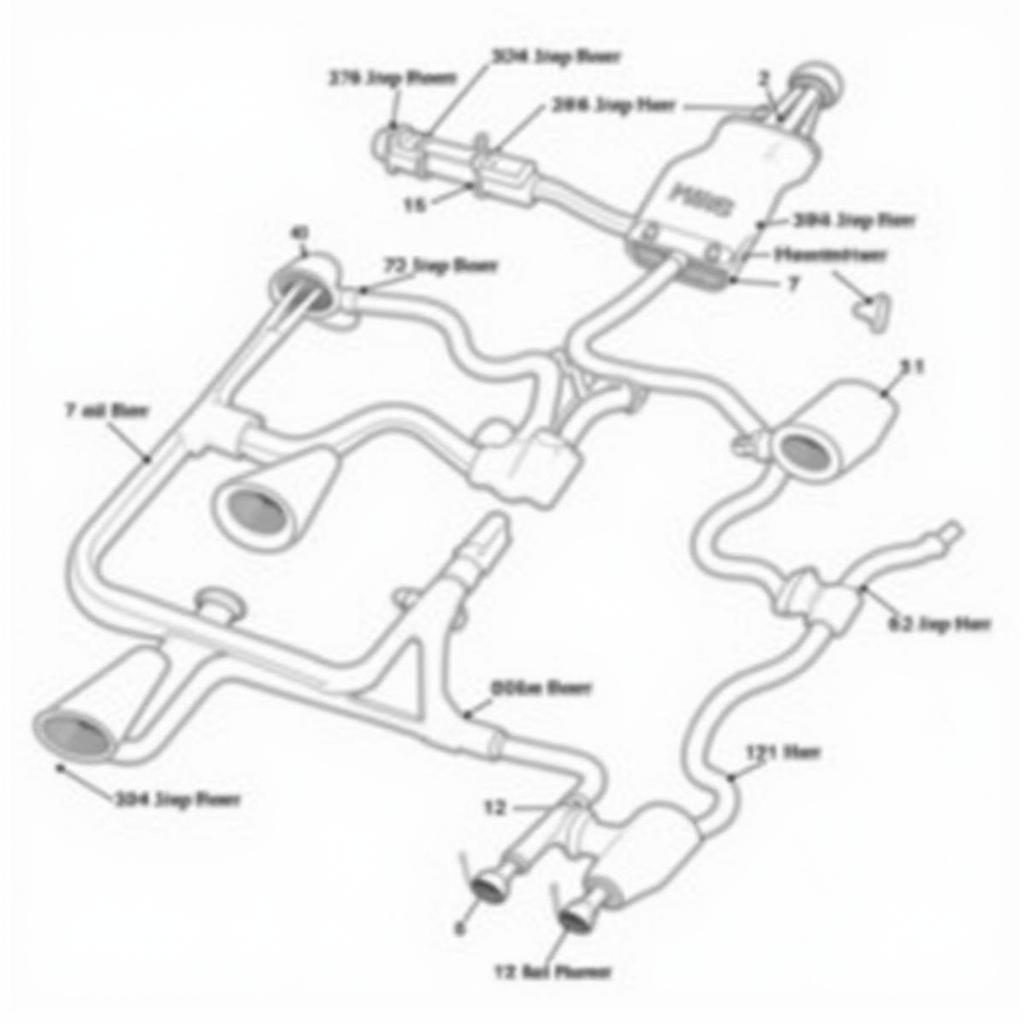The 2011 BMW FRM module fuse is a critical component responsible for powering various functions in your vehicle, including lighting, windows, and central locking. A faulty fuse can lead to a range of issues, leaving you stranded and frustrated. This comprehensive guide will delve into the common problems associated with the 2011 BMW FRM module fuse, providing practical solutions and troubleshooting tips.
Understanding the function and importance of the FRM module is crucial. This module acts as the central control unit for various electrical systems in your BMW. When the 2011 BMW FRM module fuse blows, these systems can malfunction, impacting your driving experience and safety. Common symptoms of a blown FRM fuse include inoperative power windows, exterior lighting failures, and issues with the central locking system. Identifying these symptoms early can help prevent further complications and costly repairs.
Common Causes of a Blown 2011 BMW FRM Module Fuse
Several factors can contribute to a blown 2011 BMW FRM module fuse. One of the most common culprits is a short circuit within the electrical system. This can occur due to damaged wiring, faulty components, or water ingress. Overloading the circuit with excessive current draw, such as installing aftermarket accessories without proper wiring, can also blow the fuse. Identifying the underlying cause is essential for effective repair and preventing recurrence.
Another potential cause is a faulty FRM module itself. While less common than a simple blown fuse, a malfunctioning module can draw excessive current, leading to a blown fuse. Diagnosing a faulty module requires specialized equipment and expertise, and replacement is often the most viable solution.
Troubleshooting the 2011 BMW FRM Module Fuse
Before replacing the fuse, it’s important to troubleshoot the issue to identify the underlying cause. Begin by visually inspecting the fuse. A blown fuse will typically have a broken filament or a darkened glass section. If the fuse appears blown, replace it with a fuse of the correct amperage. Never use a higher amperage fuse, as this can cause further damage to the electrical system and even create a fire hazard.
If the new fuse blows immediately, this indicates a short circuit or another underlying electrical problem. In this case, seeking professional assistance is recommended. A qualified technician can utilize specialized diagnostic tools to pinpoint the source of the issue and perform the necessary repairs. Similar to a 2011 bmw e90 335i frm 3, a proper diagnosis is essential for effective repair.
Replacing the 2011 BMW FRM Module Fuse
Replacing the fuse is a relatively straightforward process. Locate the fuse box, typically located in the glove compartment or under the dashboard. Consult your owner’s manual for the exact location and fuse diagram. Once you’ve identified the correct fuse, use a fuse puller or small pliers to carefully remove the blown fuse. Insert the new fuse of the correct amperage into the empty slot. Ensure the fuse is securely seated.
Preventing Future Issues with the 2011 BMW FRM Module Fuse
Regular maintenance and inspection of your vehicle’s electrical system can help prevent future problems with the FRM module fuse. Ensure all wiring is properly insulated and secured. Avoid overloading the electrical system by installing aftermarket accessories without proper wiring. This is similar in concept to the issues you might find with a 2011 bmw x5 frm module. Addressing any water leaks promptly can also prevent corrosion and short circuits. Using a bmw frm module repair tool can help diagnose and fix certain issues.
Conclusion
The 2011 BMW FRM module fuse is a small but vital component that plays a crucial role in the functioning of various electrical systems. Understanding the common causes of a blown fuse and implementing proper troubleshooting and replacement procedures can save you time and money. Regular maintenance and proactive measures can help prevent future issues, ensuring the smooth and safe operation of your BMW.
FAQs
-
What does the FRM module control in a BMW?
The FRM module controls various functions like lighting, windows, and central locking. -
Where is the FRM module fuse located?
It’s usually in the glove compartment or under the dashboard; check your owner’s manual. -
What are the signs of a blown FRM fuse?
Common signs include inoperative power windows, exterior lighting failures, and central locking issues. -
Can I replace the FRM fuse myself?
Yes, it’s a relatively simple process, but if the new fuse blows immediately, seek professional help. -
How can I prevent future FRM fuse issues?
Regular maintenance, proper wiring, and addressing water leaks can prevent future problems. -
What should I do if the new fuse blows immediately after replacement?
This indicates a short circuit; consult a qualified technician for diagnosis and repair. -
What tools do I need to replace the FRM fuse?
A fuse puller or small pliers are typically sufficient.
Need help? Contact us via WhatsApp: +1 (641) 206-8880, Email: CARDIAGTECH[email protected] or visit us at 276 Reock St, City of Orange, NJ 07050, United States. We offer 24/7 customer support.

